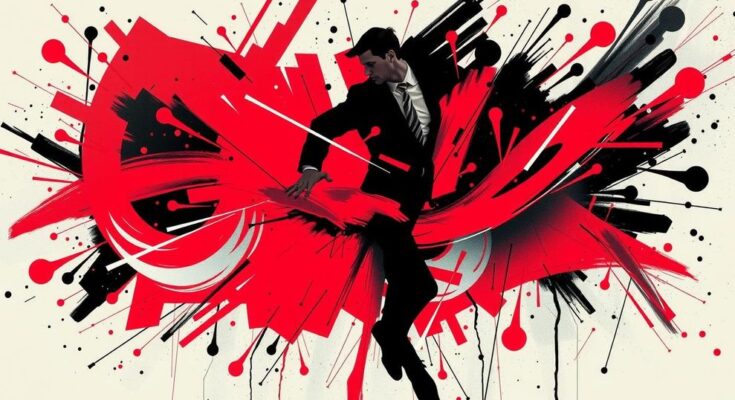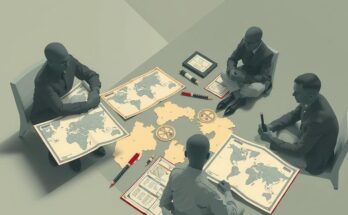Political violence, simmering at the heart of the American experience, shapes both history and the current national soul in ways that resonate with disconcerting regularity. Most alarming? It shows no sign of fading away.
A Chilling Legacy of Political Violence in America
Political violence has long been woven into the fabric of American history — a tangled lineage that dates back to the founding of the nation itself. It’s not just a whisper of the past; it’s a roaring echo still resonating in the streets today. The United States, buoyed by its past of atrocities against Indigenous peoples and the enslavement of Africans, bears a peculiar weight of violence that feels almost inescapable. Political violence isn’t merely a consequence of individual action but a byproduct of systemic issues deeply ingrained within the national psyche.
Recent Incidents Reflect Broader Cultural Violence
This summer has already underscored these alarming realities. The news cycle spins like a violent carousel, revealing chilling instances of brutality. On June 14, a vigilante attack rocked Minnesota when Vance Boelter shot dead former House Speaker Melissa Hortman and her husband, Mark, after also critically injuring State Senator John Hoffman. In a separate but equally tragic event, a shooting marred a protest in Salt Lake City, claiming the life of fashion designer Arthur Folasa Ah Loo. These instances aren’t stark aberrations; they’re reflective of a wider culture that often… well, almost celebrates chaos.
Political Rhetoric: A Disturbing Duality
And then there’s the rhetoric, found in everything from the tweets of politicians to their hollow responses to violence. After the Minnesota shootings, the governor’s mealy-mouthed comments about tolerating such horror ring starkly hollow. His words seem more a performative act than genuine concern. And while some politicians express faux ire at the events, they clash with their own histories of incendiary rhetoric, like that of Representative Derrick Van Orden. He condemned violence whilst simultaneously mocking the governor’s responses, displaying a familiar pattern of grasping the moral high ground yet standing firmly within a culture steeped in aggression.
The Role of Rhetoric in Fueling Violence
But the politicians aren’t the only ones at fault; this violence has been nurtured by the larger societal landscape, a nation that appears continually nestled on the brink of unrest. Donald Trump has become a figure synonymous with stoking division and fear. His inflammatory remarks during public appearances have urged vigilantism among his supporters, evidenced dramatically in Springfield following a debate where he painted Haitian immigrants in a horrifying light. The implications? Weeks of threats against a vulnerable community that simply sought asylum.
The Dark Legacy of Violence Against Activists
Tragically, this pattern spirals further into American life. From political assassinations—think Lincoln, Kennedy, and many more—to the chilling reality of domestic terrorists targeting civil rights advocates, each act is a place in a dark gallery of violence. Today’s victims, like Jonathan Joss and Arthur Folasa Ah Loo, underscore that this isn’t merely a narrative but a brutal reality, often dressed in the language of supremacy. The history of violence against those advocating for justice is relentless. It raises a crucial question: can the cycle ever be broken?
Violence Beyond Borders: An International Dilemma
As the world watches the US’s recent military actions with scepticism, the wider implications of this violence linger well past the borders. Certainly, the air strikes against Iran could be seen as a reckless exacerbation of geopolitical tensions, historically rooted in a pattern of violence against nations often not reciprocally armed with the same military might. And let’s not fool ourselves; this isn’t new, nor can it be divorced from a legacy marked by moral hypocrisy. While politicians navigate propped-up justifications for action abroad, the truth is that each bombing raid and militarised intervention feeds into a belief system plagued by racism and inequality.
The Uncertain Future of American Violence
So, looking forward, one can’t help but feel a sense of foreboding. The principles laid down by Malcolm X resonate with grim clarity in today’s context. The violence rippling through America ebbs and flows like the tide, and unless there’s a genuine pivot away from embedded white supremacy and gun culture, domestic and global tensions will continue unabated. The cycle of violence is complex yet cunningly straightforward; to disregard it is to court unending chaos. As the nation grapples with its violent DNA, the prospect of overcoming this monster remains draped in uncertainty.
In summary, the pattern of violence—a deeply embedded aspect of the American experience—shapes both domestic issues and external interventions. It manifests in various, often horrific forms, from shootings to international conflicts. Unless the fundamental societal issues are addressed, this legacy of violence could lead America further down a destructive path. As the country contemplates its future, it faces a sobering choice: to continue in cycles of violence or seek a path of healing, reconciliation, and meaningful change.




